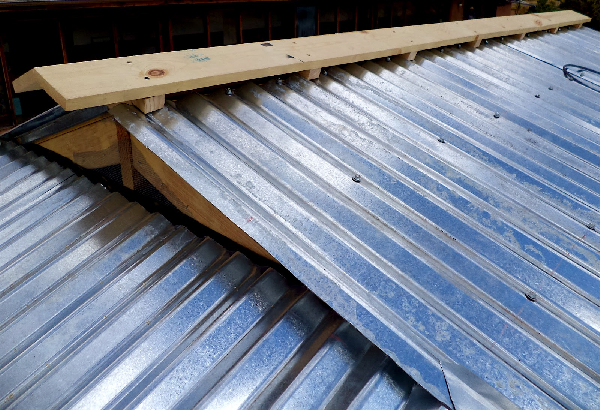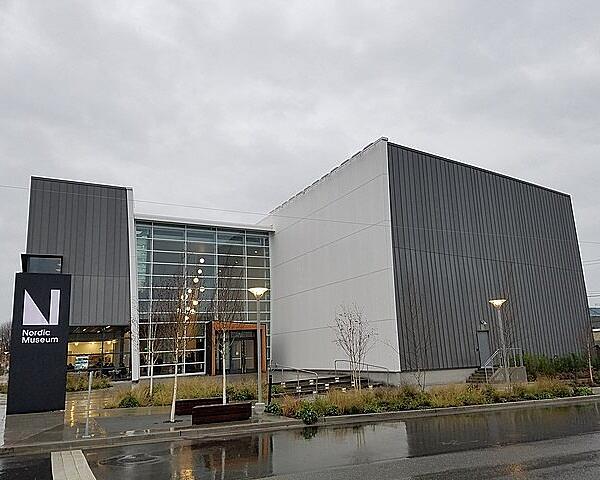Zinc & Stormwater Runoff

There is often confusion over zinc runoff due to storm events, where it is perceived that surges of zinc from galvanized steel elements are discharged into soil or water to the detriment of the local ecosystem.
AGA white paper HDG Steel’s Contribution to Zinc Levels in the Water Environment (2013) evaluated six case studies of galvanized bridges and docks in aquatic environments and studied the existing background zinc levels and flow rates of the waterways, as well as the corrosion rate of zinc and the introduction of zinc during storm events. It was determined the addition of zinc to the water environment did not exceed the criterion level for zinc defined by the U.S. Federal Clean Water Act as causing toxicity to aquatic organisms. In fact, the additional zinc was found to be at least 100 times less than the permissible level of zinc in drinking water. AGA white paper HDG Steel’s Contribution to Zinc Levels in the Soil Environment (2013) similarly examined zinc added to the environment over decades of service and determined it is not enough to harm any organisms or exceed criterion levels.
In recent years, concerns have been raised by engineers in the Pacific Northwest, which largely stem from (a) preconceived notions of zinc being a “toxic heavy metal” and (b) a 2017 report from the WA Department of Ecology with a widely distributed summary document. The report attempted to determine sources and quantities of zinc released from building materials and whether source control is necessary to avoid potential to harm aquatic organisms. Additionally, WA Department of Ecology publication Suggested Practices to Reduce Zinc Concentrations in Industrial Stormwater Discharges (2008) recommends the use of a duplex system (painting over galvanizing) near impaired waters to avoid zinc stormwater runoff.
It should be broadcast that the 2017 (Phase I) report and other earlier studies on zinc runoff are later refuted by a (less publicized) 2019 (Phase II) report from WA Department of Ecology stating it vastly overestimated the amount of zinc contributions from building materials in the initial study, often by orders of magnitude. Further, the 2017 (Phase I) report is a desktop study (literature review, GIS analysis, local precipitation data) intended to identify and estimate the major anthropogenic sources of copper and zinc released in a small urban watershed, while Phase II employs field sampling to ground-truth the Phase I findings/estimates. Specifiers citing the 2017 (Phase I) report findings should be made aware of the 2019 (Phase II) report as soon as possible.
This combination of early studies and precautionary guidance has contributed to ongoing uncertainty around the application of hot-dip galvanizing for asset protection from corrosion in environmentally sensitive areas throughout the region. In response to these concerns, the AGA and the International Zinc Association (IZA) conducted four desktop analyses to assess zinc runoff from HDG steel in Washington State. AGA white paper Runoff from Zinc-Coated Construction Materials: Risk Assessment Supports Aquatic Safety (2025) summarizes hypothetical scenarios near water bodies where zinc-coated and zinc-based construction materials were assumed, including two state highway bridges, a utility line installation by the Snohomish River, and an architectural project in downtown Seattle. Even for worst-case scenarios which almost certainly overestimate the predicted zinc concentrations in the receiving water, results demonstrated zinc runoff from zinc-coated and zinc-based construction materials used near sensitive Washington State surface waters pose no significant threat to aquatic life; therefore, the use of duplex systems or restrictions on HDG materials, as suggested by WA Department of Ecology’s guidance, is unnecessary. Since the analyzed waters represent some of the most sensitive environmental conditions in the nation, it can be reasonably concluded that zinc is safe in the majority of other locations across the United States.
Stormwater Benchmarks for Zinc
Additional confusion arises regarding the topic of stormwater benchmarks for zinc and methods to avoid exceedances. According to the US EPA, a benchmark is a concentration value in parts per million (ppm) used to evaluate a pollutant of a regulated activity as either: not expected to have an impact on receiving water quality, or, adversely affecting the receiving water quality (and therefore control measures must be evaluated).
Pertaining to hot-dip galvanized (HDG) steel, zinc in stormwater runoff is important to consider from two perspectives when discussing stormwater benchmarks:
- Runoff from an HDG steel facility
- Runoff from HDG steel in-use (e.g., in projects such as bridges, guiderails, utility poles, etc.)

It is important to consider these two perspectives because facilities have stormwater benchmarks as part of their national pollutant discharge and elimination systems (NPDES) permit, whereas galvanized structures in-use do not have permit limits. Stormwater benchmarks for zinc are generally derived from water quality criteria (WQC), and the benchmarks are used to determine if a facility’s stormwater pollution prevention plan (SWPPP) is adequate. Because zinc stormwater benchmarks are based on WQC, they depend on receiving water hardness. Across a range of hardness from 25 to 250 mg/L as CaCO3, zinc stormwater benchmarks generally vary from 37 to 260 μg/L of total zinc1. Exceedance of a stormwater benchmark is not itself a violation of the NPDES permit, but failure to report the exceedance is a violation. In response to a benchmark exceedance, corrective actions may be necessary to decrease the amount of zinc in the facility’s stormwater discharge. Treatment of a facility’s stormwater effluent by means of zinc removal filter systems may only be necessary if other good housekeeping practices (e.g., sheltering galvanized materials, routine work area sweeping, retention of water on site) do not decrease zinc concentrations below the stormwater benchmark.
For galvanized structures in-use, there are no applicable permit limits. However, it should be recognized that stormwater runoff will convey zinc from these structures to nearby surface waters. The time course over which zinc would be carried from galvanized structures to surface waters could span the entire lifetime of the galvanized structure, which could be 75 years or more. Indeed, several case studies conducted by the AGA, as mentioned above, demonstrate zinc released from galvanized structures (e.g., bridges and docks) under stormwater runoff scenarios does not lead to exceedances of hardness-based zinc WQC. Therefore, individual galvanized structures are not likely to result in water quality impairments due to zinc. Additionally, it is recognized that current hardness-based WQC are generally overly conservative (i.e., too low) for zinc because water chemistry characteristics other than hardness affect zinc bioavailability in surface waters. Consequently, new and improved WQC are being developed by the US EPA, and are currently slated for release by the end of 2024.
AGA provides a "slide deck" of materials summarizing the above topics for presentations aimed at discussing zinc stormwater runoff from HDG structures (MS Powerpoint, with notes included).

Project-Specific Concerns
A project-specific zinc runoff assessment (see example assessment of the Nordic Heritage Museum in Seattle, WA) is one method available to demonstrate the zinc runoff from a structure will not exceed the Washington WQC for zinc based on a combination of variables/factors. AGA members should contact the AGA if project-specific assistance is deemed necessary.
For projects where zinc in stormwater runoff is established as a concern, AGA encourages you to request the primary source of the concern from the specifier. Answers to the following questions are helpful to address the concern:
- Is this project over/near an impaired water source as determined through Washington's Total Max Daily Load (TMDL) program?
- Is there any document referenced by the consultant or engineer over concerns with zinc? e.g. the 2017 WA Dept of Ecology report?
- Is there an opinion that zinc is a heavy metal and therefore must be harmful?
Additional Resources
- AGA White Paper: Runoff from Zinc Coated Construction Materials: Risk Assessment Supports Aquatic Life
- AGA White Paper: Hot-Dip Galvanized Steel's Contribution to Zinc Levels in the Soil Environment
- AGA White Paper: Hot-Dip Galvanized Steel's Contribution to Zinc Levels in the Water Environment
- E. Van Genderen, W. Adams, R. Cardwell, J. Volosin, R. Santore, P. Rodriguez, An Evaluation of the Bioavailability and Aquatic Toxicity Attributed to Ambient Zinc Concentrations in Fresh Waters from Several Parts of the World, Integrated Environmental Assessment and Management, 2009
Footnotes:
- Multi-Sector General Permit (MSGP) for Stormwater Discharges Associated with Industrial Activity. United States Environmental Protection Agency (EPA) National Pollutant Discharge Elimination System (NPDES). Part 8 – Sector-Specific Requirements. 2021.
